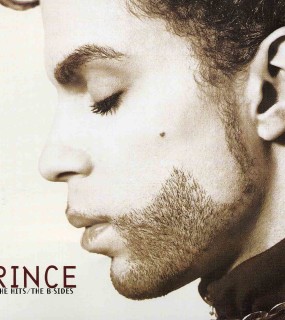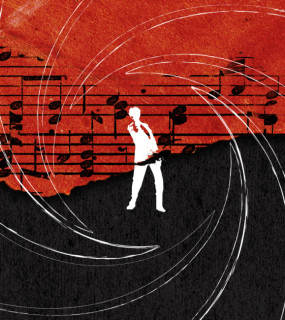Beck – Wow
Beck’s masterpiece Odelay turns 20 in a couple of weeks, and with his new single “Wow,” Beck sounds like he’s returning to that album’s sound. More specifically, Beck has somehow come up with a 2016 version of the bemused surrealist funk of Odelay. The track, which Beck teased on Instagram yesterday, has Atlanta trap drums and a woozy flute-loop and a little bit of just-woke-up rapping from Beck. (Same lyric: “All the rules that you choose to use to get loose! With the luminous moves!”) It also has a big, sweet, incandescent hook. It’s a great song! And a vast departure from the somber Beck of Morning Phase.
Read the rest of this article at Stereogum
The Avalanches – Frankie Sinatra
In April, the Avalanches announced their imminent return to the stage, with shows at Primavera Sound, Field Day, and more. The group then shared a teaser video called “Since They Left Us,” which had cameos from Father John Misty, Danny Brown, Ariel Pink, Royal Trux’s Jennifer Herrema, and Kirin J. Callinan. Later that same week, they teased a new song, “Subway,” via a telephone hotline. Now, 16 years after their releasing seminal album Since I Left You, the Avalanches are back with brand new music. As promised, they’ve shared a new song called “Frankie Sinatra,” which features MF DOOM and Danny Brown. Brown referenced the song in 2014 when he said his work with the Avalanches would “change the world.” (At the time, he referred to the song as “Frank Sinatra.”) The group premiered the track on Beats 1, where they also sat down for an interview with Zane Lowe. The track will appear on their upcoming album Wildflower, which is out July 8. “Frankie Sinatra” will also beavailable as a 7″ with an extended version of the track on June 14.
Read the rest of this article at Pitchfork
De La Soul – Pain (feat. Snoop Dogg)
Following the release of their EP For Your Pain and Suffering, legendary hiphop trio De La Soul is revving up for the debut of their crowdfunded, comeback album And the Anonymous Nobody by recruiting Snoop Dogg for the funky, breezy “Pain.”
De La Soul’s release of “Pain” comes with an interactive lyric video game where the player must maneuver a man holding a microphone away from the lyrics and random objects that slide across the screen. The song itself is a soulful, smooth throwback track, with a gospelinfluenced chorus harmonizing “Pain gon’ make it better” on the hook.
Read the rest of this article at RollingStone
Shop

Shop The Las Salinas Large Suede Clutch in Ibiza Sunset at Belgrave Crescent & This Is Glamorous – The Shop
The Strokes – Drag Queen
‘Drag Queen’ is one of three new songs that appear on the band’s new EP ‘Future Present Past’. The band gave all three songs a live airing at a gig at Capital Theatre in New York City earlier this week.
Frontman Julian Casablancas recently said a full album would be recorded “if the collective will could be summoned and caroused”.
‘Drag Queen’ and the band’s other new songs ‘Oblivius’ and ‘Threat Of Joy’ are joined on the EP by a remix of ‘Oblivius’ by drummer Fab Moretti. Following the unveiling of the EP, fans and NME readers gave their verdict online. “The musical experience I had today was amazing I remember why I love the strokes so much,” tweeted one user, while another wrote: “The Strokes are back, everything is right.”
Some fans weren’t as excited, however. One wrote “So you think that new strokes track is going to sound alright at the beginning and then Julian opens his mouth” and another tweeted: “I really like the synths/beat/layers in Drag Queen. The other 2 are classic The Strokes – for that reason don’t impress much.”
Read the rest of this article at NME
Wretch 32 – Antwi
In February this year, well-known and revered music lawyer and exec Richard Antwi sadly passed away. Someone responsible for helping launch the careers of so many, the tributes poured in from the likes of Tinie Tempah, Lethal Bizzle, Estelle, and also Wretch 32. Today, Wretch shares the visuals for a track entitled “Antwi”, a dedication to his former manager and mentor. It’s not so much a tribute, but rather a cathartic outpouring of energy and inspiration: “It’s like an intense display of my art,” revealed Wretch. “After the Fire In The Booth, my eyes opened and I know there are people out there that still want to hear what I have to say.”
Over the track’s blaring horns and rising drum patter, the north London rhymer is in an undeniably confident mood, proclaiming himself Shakespeare with great hair. A raw expression of himself at this current moment in time, “Antwi” marks another turning point for Wretch this year, defying his usual spot-on approach to pop convention. It’s a blasting chorus-less stream of consciousness as the rapper—in loving memory of the late Richard Antwi—heralds the next chapter
Read the rest of this article at Complex
News
The Greatest: Muhammad Ali’s Hip-Hop Legacy

In my first-ever apartment, I had a wall of photos, most of them cut or torn haphazardly out of my favorite magazines. The photos were all recklessly affixed to the wall with extra-strength tape, decoration done by a 22-year-old who knew nothing of security deposits. In the center, there was the photo of Muhammad Ali — the one that everyone knows: Ali, standing over the collapsed body of Sonny Liston after a first-round knockdown in 1965, his arm cocked, muscles rising through his skin, his mouth open, as it often was in those days, shouting down at his opponent. It is, in many ways, the picture that best defines Ali: someone or something he always knew he could conquer resting at his feet, while he stood, shouting, ready for the next fight.
On the wall, next to Ali, there was a picture of Big Daddy Kane on a throne. Below it, a picture of LL Cool J with a panther beside him and a gold rope chain around his neck. Above it, a picture of Slick Rick, drowning in a massive collection of jewelry. Next to that, a picture of Queen Latifah, wearing a crown of fire. It would be a lie to call this placing intentional. Ali was the only athlete on the wall, surrounded by photos of rappers spanning all eras. But I think about Ali now, the day after he has left us, and I think the placement makes sense. Ali was the first great MC, the mouth from which all other mouths came, the voice that rattled the mountains and shook out 100 children.
In 1964, before the first Ali-Liston fight, when he was still going by Cassius Clay, Ali wrote a poem. It’s a rhyming boast called “Clay Comes Out to Meet Liston,” filled with couplets like “Liston keeps backing but there’s not enough room / It’s a matter of time until Clay lowers the boom.” Ali imagines punching Liston clear out of the boxing ring: “Liston still rising and the ref wears a frown / But he can’t start counting until Sonny comes down.” These moments, Ali loud and boasting, were mind games, without a doubt. A way to get into an opponent’s head and render him defeated before even throwing a punch.
Read the rest of the story at MTV
Prince’s Own Liner Notes On His Greatest Hits

When Prince’s first greatest hits collection was released, Prince made private comments as a guide for the liner notes. Later briefly posted on his website thedawn.com in 1996, Prince’s comments have been lost for the last 20 years, but now provide a rare first-person insight into how he saw some of his most famous songs.
In 1993, just as Prince had changed his name and began wrangling with his record contract, he agreed to his first-ever collection of greatest hits, released as a 3-disc set, The Hits/The B-sides. Prince’s longtime manager Alan Leeds wrote the liner notes for the box set; already an industry legend for his work with James Brown, Leeds had won a Grammy for his extraordinary work on the liner notes for Startime, the definitive James Brown box set released in 1991.
But Leeds’ notes on Prince’s work included a number of mentions of anecdotes and inspirations that Leeds couldn’t have been privy to first-hand, and a few that only Prince himself could have known. When liner notes for The Hits were posted on thedawn.com three years later, fans were shocked to see that, rather than simply replicating Leeds’ writing, the notes on the site were clearly Prince’s own thoughts. The notes omit many tracks, include mention of songs that weren’t included in the box set at all, and include what appear to be editorial suggestions for Leeds.
Prince often refers to himself as “PRN” (Prince Rogers Nelson) throughout. This was likely both reflective of his longtime habit of trying to issue his pronouncements as coming from a larger, vague collective rather than just himself, and the fact that the notes were likely captured as recited to an assistant. However, it could also have been a deliberate stylistic choice in reference to his then-recent name change; at the time this was published, his public position was that “Prince” was dead.
Read the rest of the story at Anil Dash
The Broken Pop of James Bond Songs

James Bond fans will remember Madonna’s 2002 “Die Another Day” as the only Bond song to embrace the sound of techno. And they recall it with little fondness. For them, and most critics, the song was insufficiently “pop”: it sounded flat, too synthetic, repetitious, not hooky enough. And lovers of dance music felt it was too pop, too commercial, too voice-heavy. None of these parties thought Madonna was the right person for the job.
It was as if “Die Another Day” forced each and every listener to make choices in a zero-sum game. Not just “are you a Bond fan or a Madonna fan,” but other, more fundamental questions: Do you think pop songs should be traditional or modern? Is music about melody or about sound? Is pop music meant to be really listened to? Should an artist give us the song we expect or should she “shake up the system” (as Madonna sings)?
We don’t normally have to make these choices. To its credit, “Die Another Day” challenges its audience to take a stand while giving us reason to answer “yes” to all of the above. It doesn’t try to hide its fractured surfaces. It makes a feature of the dance-vs.-pop tensions that threaten to undo it. And it begins, cannily, with a chopped-up string arrangement that has nothing to do with dance music or pop but a lot to do with the Bond-song legacy; and it soon adds flamenco clacks that have nothing to do with any of this but a lot to do with the tortured figure of Bond we see in the movie’s credit sequence.
We’ve started calling songs like “Die Another Die” broken songs, and we’ve become interested in them because most James Bond songs qualify. And how could they not? They have different stakeholders and commitments tugging at them from every direction, and they dare not disappoint any of them. You can hear them being buffeted about by contradictory imperatives: the producers want the singer to constantly repeat the film’s title, the singer wants something that won’t disappoint his or her fans, the film composer wants the song to be of a piece with the score. That something messy emerges from such a swirl of competing priorities is not actually surprising. It’s more surprising how fantastic the messiness can sound.
Read the rest of the story at Longreads


